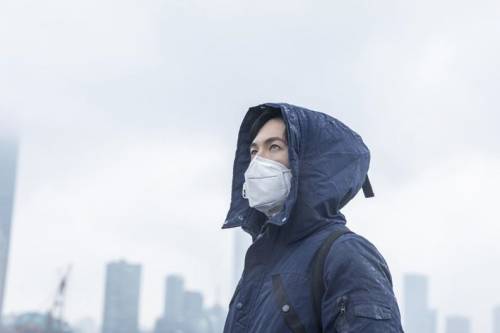
Novel coronavirus infection and the outbreak of pneumonia are at a crucial moment, which has aroused great attention from the society. The normal lives of hundreds of millions of people have been affected.
Small video popular novel coronavirus pneumonia all
According to the public prevention guidelines issued by the National Health Commission, people all over the country unite as one city, try not to go out or reduce going out activities, wear masks when going out, open windows frequently, ventilate frequently, adhere to safe eating habits, and avoid contacting people with respiratory symptoms (such as coughing and sneezing, etc.) as far as possible.

In addition to the above preventive measures, active preventive sterilization has also received more attention and is being actively applied in disease prevention.

In the field of lighting sterilization, I believe we are not unfamiliar with UV LED, but what is the difference between UV LED and traditional UV lamp?
Traditional ultraviolet lamp is the main ultraviolet light source with mercury lamp, which has strong killing effect on biological cells, but it is also one of the physical carcinogens, causing great harm to human body. However, UV LED (ultraviolet light emitting diode) is a green technology to achieve sterilization effect through ultraviolet light, which is a high-tech semiconductor light source emitting ultraviolet light.

Compared with the traditional UV curing mercury lamp, UV LED has the advantages of more efficient, more stable, low power consumption, long service life and environmental protection. In recent years, more and more manufacturers began to require UV led to replace UV mercury lamp in curing equipment.

UV LED lamp, sterilization efficiency up to 99%
UV is ultraviolet, and can be further divided into UVA (320-400nm), UVB (280-320nm), UVC (200-280nm). The main application of UVC is sterilization.
UV LED germicidal lamp can emit ultraviolet light with wavelength of 253.7nm, which is most easily absorbed by proteins and nucleic acids of bacteria and viruses. It can denaturate and dissociate proteins, form thymine dimer in nucleic acids, and destroy DNA and RNA structures of various viruses and bacteria.
It can kill bacteria and viruses in a few seconds, and the sterilization efficiency can be as high as 99%, which can kill bacteria that cannot be sterilized by other disinfection methods.

At the same time, the effect of ultraviolet on nucleic acid can lead to the breaking of bonds and chains, cross-linking between strands and the formation of photochemical products, which changes the biological activity of DNA and makes the microorganism unable to replicate. include:
(1) Bacteria (more than 18 species), such as Escherichia coli, bacilli, Escherichia coli, Klebsiella, pulmonary tuberculosis, Neisseria, Salmonella, etc;
(2) Mold (more than 8 species), such as Penicillium, Niger, Mucor, fecal fungi, etc;
(3) Filter virus (more than 10 kinds), such as hepatitis virus, influenza virus, poliovirus, etc.

The prospect is promising, with a compound annual growth of 27%
At present, about 3 million people die from water pollution, air pollution and bacterial invasion every year. Major related enterprises are developing patent technology of deep UV led to produce health microchip and provide cleaner and digital sterilization methods.

To solve the problems of ultraviolet mercury lamp sterilization in the current market, such as fragile, easy to produce harmful chemicals, large volume, short life, unable to digital control and so on. It can also bring better health to people who still live in areas polluted by bacteria, water and air.
According to the report of deep UV LED application market released by ledinside, the global UV LED market scale will exceed US $300 million in 2019, and it is estimated that the market scale will reach US $991 million by 2023, with a compound growth rate of 27% from 2019 to 2023.
In November 2019, NSFI international listed UV LED technology into the drinking water treatment standard, providing new standards and new testing methods for the use of UV LED technology to reduce microorganisms. UV LED has been increasingly valued in sterilization and water purification.

In 2019, Japanese and Korean manufacturers will actively cultivate the UV LED market, including: nitride semiconductors, Seoul viosys, LG Innotek, Nichia and epitop. In the future, many LED manufacturers will actively develop UV-C LED products, including Nichia, OSRAM OS, uvphotonics, violumas, etc.
Looking forward to the application market demand, in addition to the stable growth of the solidification market, surface / air sterilization and purification, static water sterilization and mobile water sterilization are the main growth drivers, accelerating the entry into the consumer market.


reminder
Although ultraviolet disinfection lamp has outstanding performance in sterilization and disinfection, ultraviolet light source can not irradiate people.

Academician Li Lanjuan said that ultraviolet radiation can disinfect the air, including tuberculosis. Medical ultraviolet rays are generally used in hospitals where special disinfection is needed. But the family does not advocate the use, because UV itself has damage to people's eyes.

How to deal with UV damage caused by carelessness
Skin burn symptoms: skin redness, pain, obvious tenderness, exudation or edema, etc. Treatment: the situation is mild, need to immediately cold compress, general 24 hours can alleviate. Serious cases need to go to the hospital for anti-inflammatory and anti allergy treatment.
Electro optic ophthalmia symptoms: foreign body sensation, burning sensation, severe pain, photophobia, tears, eye spasm, conjunctival congestion or conjunctival edema. Treatment: go to the hospital
The epidemic is in an outbreak period. Please remember to keep indoor air circulation at home, wash your hands frequently, pay attention to personal hygiene, try to reduce going to crowded places, and pay attention to wearing masks.
If you have fever, respiratory tract infection symptoms, especially persistent fever, you should go to medical institutions in time.

When the spring is warm and the flowers are blooming, we will enjoy the beautiful scenery together.

Wuhan, come on!

Come on Hubei!
Go China!